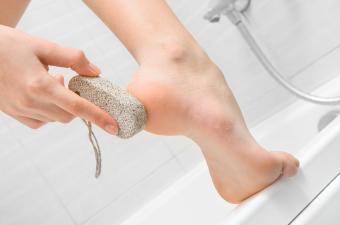
Facial peels are an option for people who want smoother, clearer skin. The depth of the peel can be adjusted to each person's needs.
Who Can Benefit
Facial peels can help improve skin texture and decrease wrinkles. They can also help even out skin tone. There are three levels of peels: light, medium, and deep.
- Light peels can smooth out skin and make it look younger and brighter. They can improve fine wrinkles, uneven color, and mild scarring from acne.
- Medium peels also help with fine wrinkles and superficial blemishes.
- Deep peels treat coarser wrinkles, more severe blotches and blemishes, and pre-cancerous growths.
How Facial Peels Work
Facial peels are a type of skin resurfacing. The peel is done using special chemicals to remove the top layer of skin and reveal the smoother, unblemished skin beneath. A common type of peel removes the epidermis (the outermost skin layer), then penetrates into the upper part of the second layer, which is called the dermis. The upper dermis generally heals well, without scarring. As healing progresses, a new, smoother epidermal layer regrows on top of the dermis.Common chemicals in facial peels include:
- Alphahydroxy acid (AHA). AHAs include fruit acid, glycolic acid, and lactic acid. These substances provide a gentle peel, involving only the top-most skin layer.
- Tricholoacetic acid (TCA). TCA gives a medium-depth peel.
- Phenol. Phenol is the strongest of the three acids and gives the deepest peel.
The Procedure
A successful facial peel begins with a consultation with the doctor. Different types of skin react differently to a peel. Although peels usually turn out well, the wrong combination of chemicals and skin type can leave skin scarred and discolored. The doctor should individualize the type, depth, and strength of each peel for each patient.Light peels require minimal preparation. The doctor applies the AHA, leaves it on briefly, and then cleans it off the skin. The peel itself takes only about ten minutes.
Before a medium or deep peel, the face must be thoroughly cleaned. The doctor will use a special cleansing solution and may apply a cream to help prepare the skin. Some people will need to pre-treat the skin over a few weeks or months, using a gentle acid or other medicine to thin the top layer of skin.
TCA peels take about fifteen minutes. Usually, no bandage or dressing is needed afterward. Deep phenol peels take longer, up to an hour or two. The doctor may apply ointment or a light bandage afterward. Because the acids numb the skin as they work, no anesthetic is necessary.
Recovery
Recovery is quick after light facial peels. There may be a little bit of redness or dryness, but most people can return to work right away. However, light peels don't make as big a difference as deeper peels. Periodic treatments may be needed.
Deep peels last longer than superficial ones, but they also have a longer recovery period. After medium or deep peels, skin will look red and raw. Over the next few days, skin will appear swollen, and it may weep a small amount of clear fluid. The fluid may form a crust or scab. Skin may also feel tender enough to require pain medication.
The doctor will usually recommend applying special ointments to keep the skin moist and supple over the first week or so after a medium or deep peel. As the epidermis regrows, skin will begin to look less raw. Depending on the depth of the peel, the redness can take several weeks to fade completely. After a deep peel, it may be two weeks before skin is healed enough to resume normal activity.
It's vital to stay out of the sun immediately after any type of peel and to use sunscreen once the top layer has healed. Sunscreen protects the delicate new skin and helps prevent sun damage from recurring.
Risks
No medical procedure is completely without risks. The doctor should explain all the risks before beginning the peel. Possible complications include:
- Changes in pigmentation. With a deep peel, skin may heal lighter than before. This is especially a problem in people with dark skin.
- Infection. Any time the surface of the skin is damaged, the risk of infection rises.
- Scarring. Although peels are meant to improve scars, it's possible that too deep a peel or problems with healing will lead to damage.







